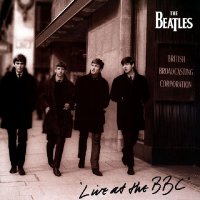"Miserlou"
Album: Mocca Flor (2004)
Adapted traditional Greek song
From Wikipedia, the free encyclopedia
Quadro Nuevo is a German acoustic quartet which was founded in 1996 and can be categorized as World Music and Jazz. The band is composed of Robert Wolf, Mulo Francel, D.D. Lowka and Andreas Hinterseher (original Heinz-Ludger Jeromine).
Within the last decade the band played about 1500 concerts all over the world and is with its numerous awards and Chart Positions among the internationally most successful German Jazz Bands[citation needed].
Their style is a composition of (cit. Quadro Nuevo) "Tango, Valse Musette, Flamenco, lovely dedusted filmmusic and an almost faded Italy".
The members of the band consist of:
Mulo Francel (sax, clarinet, mandoline, vibraphon and others)
Robert Wolf (guitar and others)
Andreas Hinterseher (accordion, vibrandoneon, piano and others)
D.D. Lowka (acoustic bass, percussions and others)
"Mocca Swing"
Album: Mocca Flor (2004)
Written-By – Mulo Francel
Album: Mocca Flor (2004)
Adapted traditional Greek song
From Wikipedia, the free encyclopedia
Quadro Nuevo is a German acoustic quartet which was founded in 1996 and can be categorized as World Music and Jazz. The band is composed of Robert Wolf, Mulo Francel, D.D. Lowka and Andreas Hinterseher (original Heinz-Ludger Jeromine).
Within the last decade the band played about 1500 concerts all over the world and is with its numerous awards and Chart Positions among the internationally most successful German Jazz Bands[citation needed].
Their style is a composition of (cit. Quadro Nuevo) "Tango, Valse Musette, Flamenco, lovely dedusted filmmusic and an almost faded Italy".
The members of the band consist of:
Mulo Francel (sax, clarinet, mandoline, vibraphon and others)
Robert Wolf (guitar and others)
Andreas Hinterseher (accordion, vibrandoneon, piano and others)
D.D. Lowka (acoustic bass, percussions and others)
"Mocca Swing"
Album: Mocca Flor (2004)
Written-By – Mulo Francel


